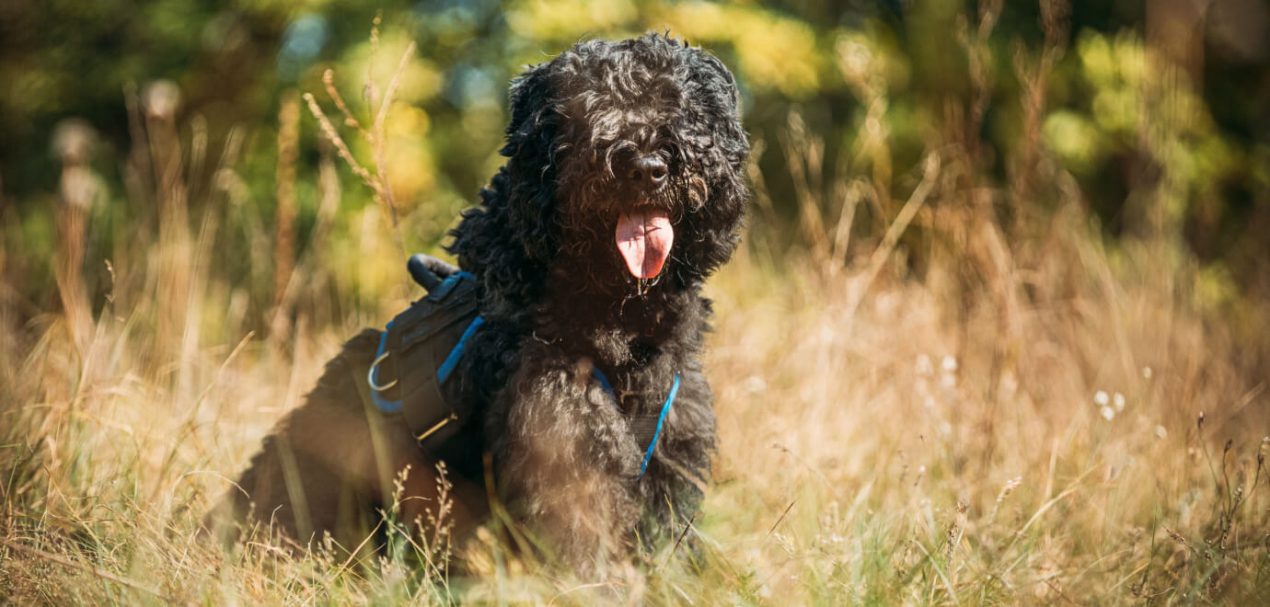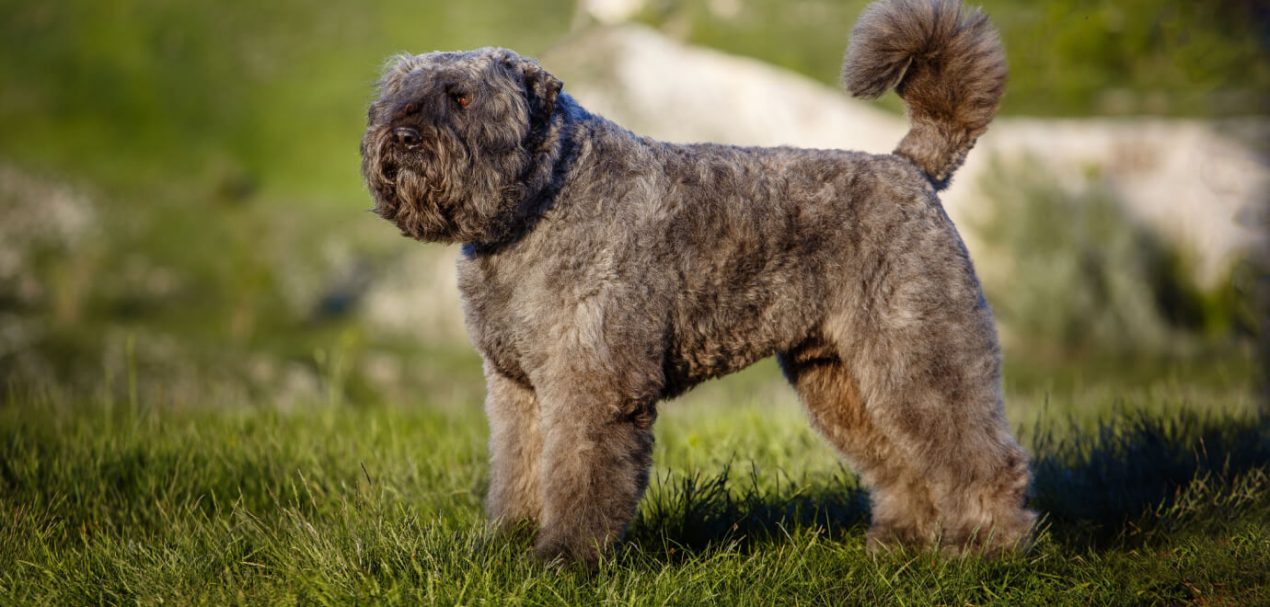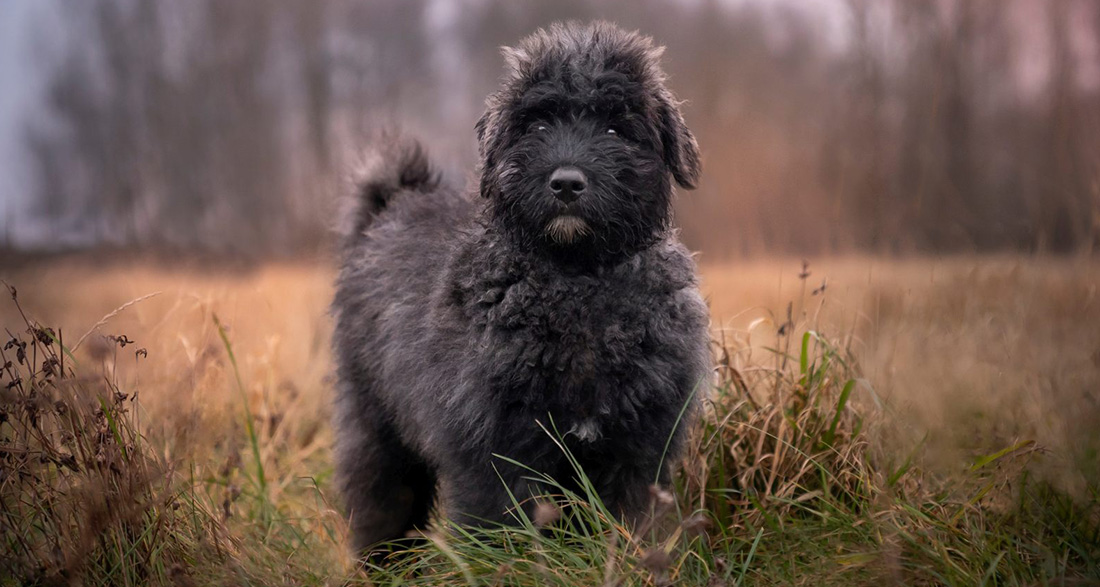The Bouvier des Flandres is an impressive breed of dog known for its versatility and robust nature. Originally bred in the Belgian region of Flanders, this dog served as a faithful companion to farmers, herding livestock and pulling carts.
With its characteristic wavy coat and bold yet gentle demeanor, the Bouvier des Flandres has won many hearts over the years. In this article, we will delve deeper into various aspects of this breed, from its health and nutrition to interesting facts and its relationship with other breeds.
- History of the Bouvier des Flandres
- Appearance of the Bouvier des Flandres
- Temperament and Character
- Acquiring a Bouvier des Flandres
- Puppy Development and Training
- How to Care for a Bouvier des Flandres?
- Activities with the Bouvier des Flandres
- Grooming a Bouvier des Flandres
- Health and Inherited Diseases
- Interesting and Noteworthy
History of the Bouvier des Flandres
The Bouvier des Flandres is an impressive breed of dog that has existed for centuries. Originally bred for agricultural work, this breed is known for its intelligence, loyalty, and bravery. In their homeland of Belgium, Bouviers were used as versatile farm dogs, working as herders, draft animals, and even guard dogs. They were also employed in military roles during World War I and II. Today, Bouviers are popular family pets and continue to excel in various jobs such as search and rescue, therapy, and police work.
The breed originates from the northern regions of France and Belgium, particularly in the area of Flanders. Initially, Bouviers des Flandres were bred for various purposes, including herding cattle, pulling carts, and serving as guard dogs. Over time, the Bouvier des Flandres became beloved family members and show dogs. They are known for their loyalty, intelligence, and protective instincts.
Breed Overview
GROUP: Herding
HEIGHT: 23.5 to 27.5 inches at the shoulder
WEIGHT: 70 to 100 pounds
COAT: Long, shaggy, rough double coat
COAT COLOR: Salt and pepper, gray, fawn, brindle, or gray and brindle
LIFE SPAN: 10 to 12 years
TEMPERAMENT: Intelligent, friendly, loyal, protective, active
HYPOALLERGENIC: Yes
ORIGIN: Belgium
Appearance of the Bouvier des Flandres
The Bouvier des Flandres is a large, sturdy, and muscular breed. Instantly recognizable by its impressive appearance, it stands between approximately 61 to 71 cm in height and weighs between 32 and 50 kg. One of its most striking features is its coat, which is thick, wiry, and water-resistant. Additionally, the coat colors can vary, including black, brindle, gray, and fawn. The Bouvier also has a distinctive beard and eyebrows, giving it a unique look. Its head is square and large, equipped with a broad muzzle and strong jaws. The ears are typically cropped and stand erect, contributing to its impressive and regal appearance.

Temperament and Character
The Bouvier des Flandres breed is known for being calm, loyal, and protective. Particularly noteworthy is their great compatibility with children, making them ideal family pets. Additionally, Bouviers des Flandres are highly intelligent, which facilitates training. They are eager to please their owners. While they are affectionate with their family members, they can also be reserved towards strangers.
With proper socialization, Bouviers des Flandres can become friendly with new people and other animals. Due to their history as working dogs, they have a strong protective instinct. This instinct makes them excellent guard dogs but can also make them stubborn and difficult to train if not handled correctly. Therefore, it is important to provide them with early and consistent training and socialization. Only then can they develop into well-behaved and obedient dogs.
| Affection Level | High |
| Friendliness | Medium |
| Kid-Friendly | High |
| Pet-Friendly | Low |
| Exercise Needs | High |
| Playfulness | High |
| Energy Level | High |
| Trainability | Medium |
| Intelligence | High |
| Tendency to Bark | High |
| Amount of Shedding | Low |
Acquiring a Bouvier des Flandres
When considering adding a Bouvier des Flandres to your family, there are several important points to consider. This breed requires someone who is home most of the day and a well-fenced yard. It is also preferable if there are no dogs of the same sex or cats in the household.
For young Bouviers, exercise should be restricted, focusing on several short walks and play sessions to protect their physical health. After maturing, they require sufficient exercise and mental stimulation through challenging activities and dog sports.
Puppy Development and Training
The development of a Bouvier des Flandres puppy typically takes 18 to 21 months to reach full maturity. In the first 8 to 9 months, puppies experience rapid growth in height and length, with a significant growth spurt between 4 and 7 months. After this phase, growth slows somewhat as the adolescent “catches up”. An important phase in development is the socialization period between the fourth and twelfth weeks, during which puppies are ready to socialize with other animals and humans.
Puppy training should begin immediately upon arrival home. During this time, it is crucial to teach the puppy what is acceptable behavior and what is not, and to correct them properly when they make mistakes. Basic training includes housebreaking and basic obedience exercises such as teaching commands like “come,” “sit,” and “stay”.
Proper Training:
The Bouvier des Flandres is an intelligent and eager-to-learn dog that can become an excellent companion with proper training. As this breed was originally bred for farm work, it has a natural inclination toward obedient and protective behavior. Training should start early to achieve the best results.
The basics of obedience training, such as sitting, staying, and coming when called, are essential and form the foundation for successful coexistence. The Bouvier des Flandres also benefits from advanced training, such as agility or obedience training, which promotes mental and physical stimulation. Positive reinforcement, such as praise and treats, can work wonders and make training time a pleasant experience for both.
How to Care for a Bouvier des Flandres?
The Bouvier des Flandres requires ample space to run and play, so a house with a large, well-fenced yard is ideal. This breed can thrive in a family environment, especially if accustomed to it from a young age. They exhibit natural vigilance and can be excellent guard dogs, making them a good choice for families.
For singles and retirees, the Bouvier des Flandres could also be a good choice provided they are capable of adequately engaging and training the dog. As for other pets, the Bouvier des Flandres generally gets along well with other dogs but may be reserved towards small pets, so introductions should be done carefully and under supervision.
Activities with the Bouvier des Flandres
The Bouvier des Flandres is an active and energetic dog that requires daily exercise to stay healthy and happy. A daily walk or jog, combined with playtime in the yard, can help keep its energy in check. Additionally, this dog can participate in various dog sports such as agility, herding, or protection training. These activities not only promote bonding between the dog and its owner but also provide a great outlet to satisfy the Bouvier des Flandres’ natural working drive.
In addition to physical activities, the Bouvier des Flandres also appreciates mental challenges. Intelligence toys and training games can help promote its sharp mind and prevent boredom. With the right amount of exercise and mental stimulation, the Bouvier des Flandres will be a happy and well-balanced member of the family.
Grooming a Bouvier des Flandres
Caring for a Bouvier des Flandres requires some dedication as these dogs need a lot of grooming to stay healthy and happy. The Bouvier des Flandres belongs to the breeds that shed little hair. Their dense, wavy coat requires regular brushing to avoid matting and keep the skin healthy. It is also important to regularly check their ears for infections and trim their nails.
Proper nutrition is also crucial for the care of the Bouvier des Flandres. This breed requires a diet rich in protein to support its muscles, as well as fats to help keep its coat shiny and healthy. Most breeders and experts recommend a mix of high-quality dry food and fresh, homemade meals.
How to feed a Bouvier des Flandres:
The diet of a Bouvier des Flandres should be carefully considered to ensure it receives all necessary nutrients. A balanced diet rich in protein, fat, and the right carbohydrates is recommended.
- Protein: A protein-rich diet is essential as protein contributes to muscle development. The required protein content in the Bouvier des Flandres’ diet ranges from 18 to 25%.
- Fat: Fats, especially Omega-3 and Omega-6 fatty acids, are important for a shiny coat and healthy skin.
- Carbohydrates: Carbohydrates should come from good sources and be present in moderation to avoid excessive weight gain.
- Fresh meat and vegetables: Including fresh meat, vegetables, and fruits in the diet can also be very beneficial.
The amount of food fed daily depends on the age, weight, and activity level of the dog. On average, an adult Bouvier des Flandres requires about 3 to 5 cups of high-quality dry food per day, mixed at a ratio of 1 cup of food to 1/2 cup of hot or cold water. It is also important to schedule regular veterinary visits to check overall health and receive nutrition recommendations.

Health and Inherited Diseases
Bouvier des Flandres can be affected by various genetic diseases. Some of the most common inherited diseases include Atopic Dermatitis, Bouvier des Flandres Myopathy, Cataracts, Hip Dysplasia, Hypothyroidism, and Glaucoma, to name a few. According to the Bouvier des Flandres Club Health Survey, almost 25% of over a thousand surveyed Bouviers suffer from dysplasia.
Elbow dysplasia is also a concern in this breed. Other orthopedic conditions occurring in Bouviers should also be considered. The University of Prince Edward Island reports that hip dysplasia is a serious health disorder that may require medical or surgical intervention. This breed has an average lifespan of 10 to 12 years and is prone to minor health issues such as hypothyroidism as well as major problems like elbow and hip dysplasia, sub-aortic stenosis (SAS), and glaucoma.
Interesting and Noteworthy
- Origin and Work: The Bouvier des Flandres originates from Belgium, particularly from the Flanders region, and was originally bred as a working dog performing various tasks such as herding cattle, pulling carts, and protecting property. The names of the breed in different languages often include the word “cow,” which speaks volumes about the original purpose of the breed.
- World Wars: Bouvier des Flandres played a role in both World Wars. During World War I, they were close to extinction but were saved by the Belgian Army, which valued their bravery. In World War II, they were used by the resistance movement in the Netherlands to deliver messages at night.
- Related Breeds: Although there is no scientific evidence of the Bouvier des Flandres’ ancestry, it is believed that they may possibly be related to various shepherd breeds, mastiffs, and spaniel-type breeds.
Bouvier des Flandres Overview
Pros
- Rare breed with a distinct look
- Naturally driven and intelligent
- Loyal companion
Cons
- High-maintenance grooming needs
- Strong prey drive
- Requires a high level of physical and mental stimulation


